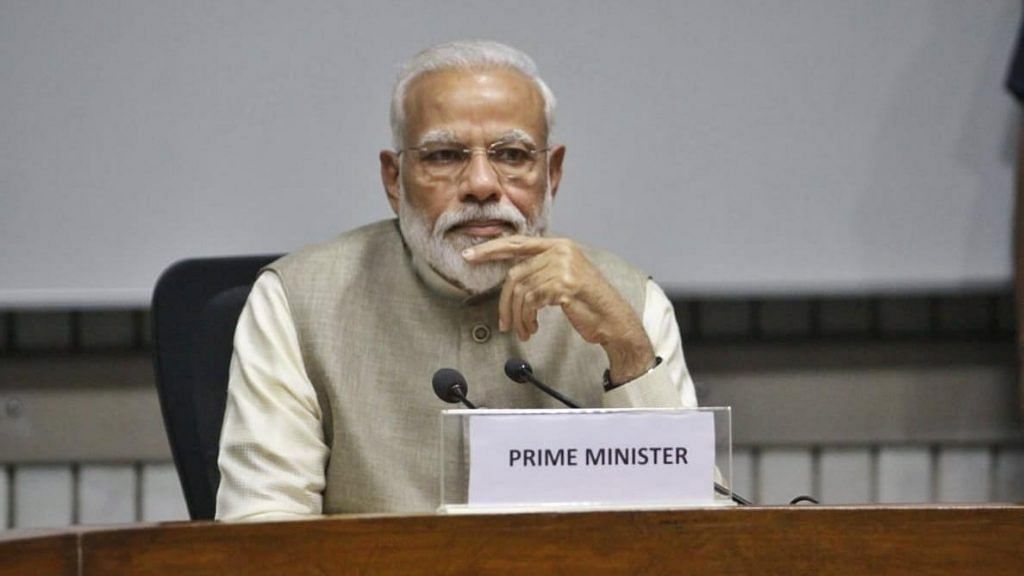New Delhi: The Food Corporation of India, the agency that administers the National Food Security Act, has seen its debt almost triple in the five years of Narendra Modi government.
The FCI, which has no income stream of its own and is completely reliant on the Union government to meet its debt obligations, has seen its total debt levels zoom to Rs 2.65 lakh crore in March 2019, up from Rs 91,409 crore in March 2014 — an increase of over 190 per cent.
The debt levels started increasing sharply in 2016-17, when the government resorted to giving loans to the FCI from the National Small Savings Fund (NSSF) to fill the gap between the actual food subsidy the government should have provided for in the budget, and what it actually did, on account of fiscal constraints.
ThePrint reached out to the FCI for comment but it did not respond.
Also read: ‘Fudge Corp of India’ – How Modi govt uses FCI to keep fiscal deficit artificially low
Financials at a tipping point
The FCI is the government agency that manages the procurement and distribution of foodgrains. Set up in 1965 under the Food Corporations Act, it is responsible for procuring foodgrains at minimum support prices, storage and maintenance of adequate buffer stock, and distribution through the public distribution system.
The central government fixes the minimum support price for procurement of foodgrains as well as the issue price at which they are supplied to the states. The difference in these two prices, along with the distribution costs, are reimbursed by the government to FCI in the form of food subsidy, making the corporation completely reliant on the central government.
However, the last few years have seen the government progressively budget much less than what is required as food subsidy. To compensate for the shortfall, the FCI has been borrowing from the NSSF every year. As of 31 March 2019, Rs 1.91 lakh crore of the FCI’s debt is through the NSSF, according to the government’s own data.
The FCI’s borrowing pattern shows it borrows mainly through four routes — cash credit limit sanctioned by banks, Government of India-guaranteed redeemable non-convertible bonds, unsecured short-term loan limit, and National Small Savings Funds loan. It also uses Ways and Means Advances from the government, but repays them before the end of the year.
“Ideally, the entire amount of food subsidy incurred in a year should be provided for in the Union budget. For more than a decade, governments have not paid it fully and FCI had to borrow from banks against sovereign guarantee,” said Siraj Hussain, former agriculture secretary who is now a visiting senior fellow at the Indian Council for Research on International Economic Relations (ICRIER).
“Then, the government started giving through Ways and Means Advances. When even that became insufficient, the NSSF route was taken three years back. Eventually, it is the government that has to repay these loans through food subsidy. The FCI’s financials seem to be at a tipping point, and bank consortiums may be reluctant to continue giving loans.”
Also read: Modi govt ‘risks’ National Small Savings Fund by using it to support struggling PSUs
Why food subsidy bill has been rising
The food subsidy bill has been on the rise on account of multiple factors. The implementation of the National Food Security Act, 2013, increased the number of beneficiaries while reducing the sale price of rice and wheat. At the same time, procurement prices have been on the rise with higher minimum support prices and rising procurement by the FCI.
“The FCI buys high and sells low, managing on subsidies paid by the government. India’s food subsidy bill has risen rapidly, doubling in six years (Rs 1.7 lakh crore in financial year 2018-19, or 0.9 per cent of GDP). Yet, India’s food subsidies have remained relatively stable as a percentage of the GDP,” said a Bank of America Merrill Lynch Global Research note in August.
“The government has struggled to pay these subsidies recently and has released amounts much lower than the funding shortfall at the FCI,” it said, adding that the government may have close to Rs 2 lakh crore of unpaid /carried-forward subsidies to the FCI.
“The FCI has no inherent cash flows with which it can repay its debt. A reduction of inventories will only partly help in deleveraging. The government of India must at some point provide the FCI with the Rs 2 lakh crore in unpaid dues,” the note pointed out.
Also read: Why Indian economic tiger became puppy with tail between legs & what markets want Modi to do
